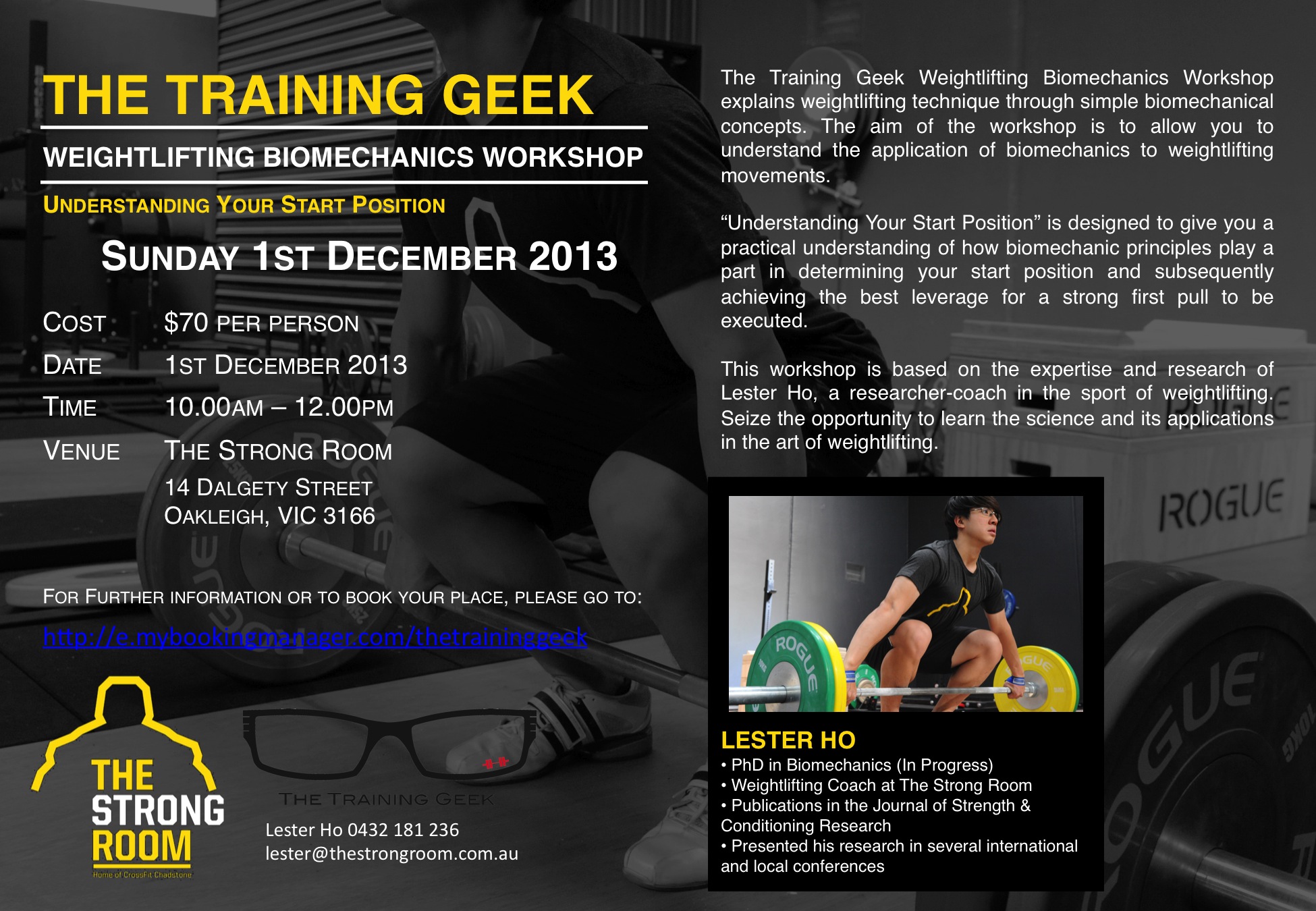The Weightlifter List: 5 Biomechanical Concepts for Weightlifting Efficiency.
ef·fi·cien·cy
noun, plural ef·fi·cien·cies.
Seen above is the definition of efficiency from Dictionary.com. "Competency in performance", "ability to accomplish a job with a minimum expenditure of time and effort", "ratio of work done to energy supplied". These definitions all mean one thing: least amount of work in the quickest amount of time to achieve a desired result. When performing the snatch, efficiency is key to ensuring consistent performance, reducing the onset of fatigue and reducing the risk of injury.
But you would wonder.. how do I achieve that? From my perspective, here are 5 biomechanical concepts to consider to enhance your efficiency in the snatch whether it's a 1RM you are going for, or a multiple-rep set that you have to nail at 80%.
1. Centre of Mass
In biomechanics, the centre of mass is seen as the point in any object where the weight of the different segments in an object are centered upon. In weightlifting, the important thing is to understand that we need to keep the centre of mass of the barbell connected to that of the weightlifter. Only that way can the barbell and weightlifter move together as a system and force can be appropriately transferred from the weightlifter to the barbell.
2. Base of Support
The base of support describes the surface area or area of contact with the supporting surface (i.e. the floor). Understanding the concept of the base of support is important to keeping balanced (i.e. the centre of mass over the base of support). The moment the centre of mass moves out of the base of support, balance is lost and more work is required to re-establish balance.
3. Ground-Reaction Force
This is derived from Newton's third law. I mentioned this in my previous post (10 Things I Wish I Knew About Weightlifting Before I Started). Your legs produce the force required to overcome the inertia of the barbell. As the contact surface with your legs is actually the ground, a resultant force is exerted from the ground to allow for the weight to gain momentum. This is why it is important to not only feel that you are using your legs but remain flat-footed so that you have more force going through the ground and subsequently more ground-reaction force that can be transferred to the barbell.
4. Displacement
Displacement is the shortest distance from the initial position of the object to its final position. In weightlifting, displacement is critical to allow time and space for the weightlifter to adopt the receiving position. This shortest distance consists of a vertical and a horizontal component. So understanding that the more horizontal (back-forth) displacement we have, it takes away the vertical component of it. Therefore it is important to maintain the barbell's trajectory in as straight a path as possible to ensure more force in the vertical direction and subsequently maximum vertical displacement.
5. Velocity
In layman's terms, velocity is speed. However, in biomechanics, it refers to the change of displacement over time. This change of displacement determines the amount of force required. The longer it takes to displace the barbell's position, the more force is required to achieve this displacement. Basically, peak velocity needs to be reached shortly after the second pull. If less velocity (little acceleration) occurs off the ground, more force is then required to bring the velocity to its peak (more acceleration). If more velocity can be achieved before the second pull occurs, then peak velocity can easily be attained in the second pull, hence becoming more efficient in the second pull.
So these are just basic biomechanical concepts that are commonly related to weightlifting which I normally highlight to everyone. If you are able to understand these concepts, the notions of balance, rhythmic timing and positioning in weightlifting are within your grasps. That way, you will begin to use less to do more.
Stay Efficient and Keep on the Science,
The Training Geek


